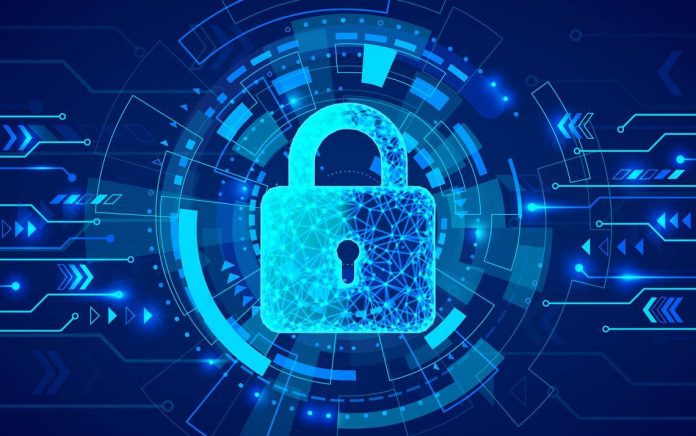This article has been written by Diya Banerjee, from Symbiosis Law School, Noida. The article talks about the growth and emergence of new trends in cyberspace and cybersecurity as well as the threats which have compelled the makers to bring in such changes.
Table of Contents
Introduction
In today’s world, it is hard to imagine life without the internet and the fact that it has come up to be one of the most preferred and integral platforms for not only e-commerce but also for education, work, even for gaming. Fun fact, the internet was invented on 1st January 1983 and formally recognized in 1990 after Tim Berners-Lee invented the World Wide Web. It means it is not even fifty years old!
The development of the internet has brought with it the concept of cyberspace, cybersecurity and cyber attacks. All the opportunities provided by the internet are definitely utilized by those who make good use of it but what we see is only the 10 percent of the internet, the rest 90 per cent is inaccessible to the general crowd, which is nothing but a hub for crackers and illegal activities. Even though many of us might take measures to keep our data and ourselves protected, unbeknown to us, someone keeps a track of what we upload and download to and from the internet sources. And this is where the practice of cybersecurity is made good. Moreover, with technological advancements, there has been a hike in the development of newer models and trends in cyberspace and cybersecurity to fulfil the growing demands.
Is cyberspace different from the internet
Cyberspace and the internet are two terms that many use interchangeably but they mean two different things related to each other. For example, the words sympathy and pity both are similar but denote two different feelings- sympathy means to genuinely feel sorry and show concern for one’s misfortune while pity means to feel sorry but not concern for one’s misfortune, just an acknowledgement.
I would not say that cyberspace is different from the internet, more so, it is a part of the broad and wide meaning of the internet. Cyberspace, to be more precise, is used to associate something with the internet and the internet culture. So, a website that you might be visiting is said to exist in cyberspace. In layman’s terms, cyberspace is a virtual universe made up of the widely spread and interconnected digital gadgets and technology, enabling one to create, modify, store, share, exchange, extract and destroy the physical resources floating all over the internet.
Need for cybersecurity
Cybersecurity, as the name itself so conveniently suggests, means the security that is provided to individuals and organizations to protect their data from cyberattacks and unauthorized access using a sophisticated system of software and hardware. It is a continuously changing field of study and the more ways the field specialists find to tackle the issue of cyberattacks, the more advanced the degree of cyberattacks becomes.
In cyberspace, it is of common knowledge that there always lingers the threat over one’s head that his or her personal data may be used for committing cyber crimes which can range from private data leaks to mass frauds.

Emerging trends and developments
Privacy and security is always the top-most priority of enterprises, be it about the monetary transactions or regarding their employee information. According to a 2014 research, 98% of the companies maintain cybersecurity and more than half of them are working toward securing much higher quality and advanced security measures. The majority of the companies who have taken cybersecurity seriously are preparing for situations where they might face an issue of cyberattacks.
Upcoming cybersecurity trends
Even in the year 2020, cybersecurity is still an area of expertise which is considered to be a field with potential room for increasing employment and market scope. In the last few years, we have seen a few alarming statistical data –
- 43% of cyber attackers make small industries their target, and in India, small industries take up nearly 30% of the GDP.
- By the end of 2020, a data breach will cause a global cost of $150 million.
- Over 75% of the healthcare systems have been infected with malware in 2018.
- 95% of the cybersecurity breaches are due to human error.
- Even big and powerful enterprises and companies take at least 6 months to identify a data breach, by that time, already compromising a lot of sensitive data.
Remember, that those who crack into our security systems are humans as well or programs designed by humans. The more interconnected digital gadgets become in cyberspace, the more the number of chances for data breaches to occur. It is an estimate that by the end of 2020, almost 200 billion devices will be connected to the internet! But 3.5 million cybersecurity jobs will be unfulfilled by 2021. This does not inspire confidence now, does it?
To enable the ease of identification of possible cybersecurity breaches and attacks, experts have listed down some trends which will alter the way cybersecurity was perceived.
-
Phishing
People are now more aware of the threat of email phishing attacks and this has made the attackers more polished in their ways to attract their attention- they have started sending emails which are more convincing with headings related to some teaching skills or courses, making one unwittingly open the mail and letting malware enter their system. Phishing has been known for allowing attackers to obtain financial credentials and access to private databases.
-
Ransomware
Ransomware is the most expensive and costly affair because every year it causes economic loss of up to billions of resources and information. With the hype in the movement of cryptocurrency like Bitcoin, experts believe that the focus of the ransomware attack will shift to high net worth individuals and organizations.
-
Cryptojacking
The increase in the business of cryptocurrency has led to an increase in cryptojacking cases. Cryptojacking refers to using someone else’s system to steal computer resources in order to mine for online cryptocurrency like Bitcoin.
-
Cyber-physical attacks
In an era where everything is internet-dominated, it is only natural for information of electric grids, dam structure and operations, water treatment, transportation facilities, to be stored in cyberspace. The breach in their security system affects the real-time operations in a region and if the breach is in the core system, it affects the entire country. That is why it is called cyber-physical attacks.
-
IoT attack
The Internet of Things is the interconnected network of mini digital gadgets like mobile phones, miniature laptops, and internet facility devices like modems, routers, etc. IoT is more vulnerable to security breaches than any other device because of their almost continuous link with the internet, providing easy open access for information theft from their devices.
-
Medical sector
After the 2010s, the healthcare sector has included the use of computers for the purpose of recording client information. Because of its infant stage at shifting its focus from manual to automated working style, the sector is the most prone to come under cybersecurity breaches. This fact is taken advantage of by the crackers who use the healthcare computer systems to churn out information like their economic position and credibility, etc., leading to some major monetary losses in the medical field.
Measures and developments made to strengthen cybersecurity
Leaving aside the emerging trends in the cybersecurity sector, we have to see what all security measures have been taken in the past, what is in use in the present and what changes have to be brought in to suit appropriate requirements. Another question that is very frequently asked is that does social media contribute anything to the field of cybersecurity and what general guidelines should be followed when working on the internet.
2014-17 cybersecurity measures
-
Cloud computing
All kinds of devices are plugged into the cloud and thus, cloud makers had to come up with their protection models to protect the digital traffic from getting compromised.
-
Mobile networks
A facility of spam filters was introduced so that any kind of spam message could be detected and accordingly blocked from further access to the device.
-
Code encryption
In the year 2014, there was a sudden surge in the total number of cyberattacks and the idea of code encryption was introduced to protect the data from being exchanged or shared through a messaging facility. It protects the message from being read by a third-party.
2018-2019 cybersecurity measures
-
Increased investment in automation
Experts are under pressure to do more with fewer resources because of the shortage of employees in the field of cybersecurity. Investment in automation has been multiplied to cater to the growing threat of cyberspace and cybersecurity breaches.
-
General data protection regulation
It is the core of Europe’s digital privacy legislation aimed to protect a natural person’s right to protect his personal data. Under this legislation, the organizations under and in the European Union are to ensure that the information they collect of the employees is through legal channels and are further obliged to take proper steps to protect their information. GDPR has ultimately put a legal liability on those in control of this information to ensure that those responsible take their task seriously as well as providing a legal remedy in case information is in fact compromised.
-
Consideration for biometric security
The higher management IT officials of enterprises have considered an option of including biometric as an added layer of security so that no information is leaked from an inside source or that no unauthorized physical entity is able to enter into a confidential information storage area.
Has social media contributed to cybersecurity and its awareness
It is actually a question that most likely will always get an answer in negative. No, the use of social media does not necessarily add to the safety of an organization’s system because, on the social media sites, an employee may be quick to give information which may not necessarily be sensitive in nature but can still be a possible key to open back-end security loopholes. Also, one might delete a post from his or her Facebook or Instagram account, but once it enters cyberspace, it cannot simply be destroyed by the sender’s mobile system. It has to be destroyed or erased using the main server, accessible to only a few controlling the entire hierarchy of cyberspace. But it is something like reverse psychology, the fear of compromising one’s personal information has indirectly made digital users aware of the need and importance to not disclose individual particulars on an open platform because even if the data shared is not confidential, it might still become a potential target of a cyberattack.
Cyber ethics
Cyberethics is the “philosophic study of ethics pertaining to computers, encompassing user behaviour and what computers are programmed to do and how it affects individuals and society”. In other words, it is a set of undescribed but well-understood code and rules for responsible behaviour one has to follow as a preventive measure to avoid wrongful or unnecessary conduct, which hurts either the person himself or someone else because of the other’s misbehaviour.
Following some general cyber ethic rules is a good practice of ensuring another layer of security to the protection measures like antivirus and firewall.
- Do not use the internet as a medium to communicate with someone. Mail services and messaging services are the correct media to opt for communication.
- Do not indulge in activities of cyberbullying. Do not share pictures that are of questionable nature.
- The information available on the internet should be used judiciously and only legal sites should be referred to for information.
- Whenever using the internet or any microblogging site, never pretend to be some other person and do not operate someone else’s account using their password.
- Never forward fake information or open a fake account. Moreover, whatever you have to download should be from permissible websites, be it a video game or a piece of academic information.
- Lastly, never ever share your personal profile information like account passwords, bank information, or even information related to your social status on the internet or social media platforms. Never share too much information about any activity you have taken up.
Conclusion
Cyberspace is a broad and immeasurable mass of space where you can literally avail innumerable services for messaging, storage devices, and online gaming programs. With time, the number of users using the internet and availing services in cyberspace has also increased tenfold. With an increase in the number of users, the number of cases of misappropriation, fraud, privacy violations, etc. have also gone up, causing an unsettling feeling of unease among those who are somehow connected using this vast network of computers. So it is a given that the need to improve cybersecurity measures has also become a pressing job.
Cybersecurity is, in all honesty, a vast topic that is getting case-specific and complex as the world continues to become technologically advanced and closely interconnected using cyberspace. Furthermore, the catch is that the more advanced cybersecurity becomes, the more sophisticated styles get adopted by crackers. It is an unending cycle of cat and mouse chase but the only way to keep our systems and ourselves protected is by following all possible safety measures, from basic to advanced.
References
- https://www.netsparker.com/blog/web-security/top-10-cybersecurity-trends-to-look-out-for-in-2020/
- https://www.netsparker.com/blog/web-security/top-10-cybersecurity-trends-to-look-out-for-in-2020/
- https://www.researchgate.net/publication/260126665_A_Study_Of_Cyber_Security_Challenges_And_Its_Emerging_Trends_On_Latest_Technologies
- https://www.jstor.org/stable/pdf/resrep11980.6.pdf
LawSikho has created a telegram group for exchanging legal knowledge, referrals and various opportunities. You can click on this link and join:
 Serato DJ Crack 2025Serato DJ PRO Crack
Serato DJ Crack 2025Serato DJ PRO Crack










 Allow notifications
Allow notifications



